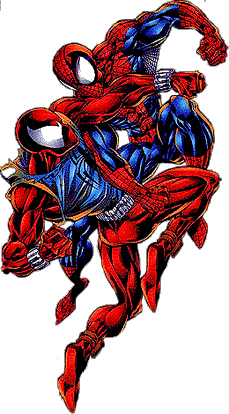 In the mid nineties, Spider-man comics became my introduction to the weird and wonderful world of super heroes. I had always been an avid comic book reader since I was a kid. I grew up reading my brother’s copies of Garfield and Peanuts and have been a fan of the medium ever since. My first memories of Spider-man were not in comic book or movie form, but from the mute costumed character that turned up in a kid’s tv show from the Eighties called The Electric Company. That said, even as a six year old, I favoured the Spider-man over Batman and Superman. He was a wise-cracker, his alter ego Peter Parker was more relatable and he had the coolest costume and method of transportation in my eyes.
In the mid nineties, Spider-man comics became my introduction to the weird and wonderful world of super heroes. I had always been an avid comic book reader since I was a kid. I grew up reading my brother’s copies of Garfield and Peanuts and have been a fan of the medium ever since. My first memories of Spider-man were not in comic book or movie form, but from the mute costumed character that turned up in a kid’s tv show from the Eighties called The Electric Company. That said, even as a six year old, I favoured the Spider-man over Batman and Superman. He was a wise-cracker, his alter ego Peter Parker was more relatable and he had the coolest costume and method of transportation in my eyes.
My introduction to the Spider-man comics came at a weird time in the industry. Given how popular super hero films are nowadays, its easy to forget how badly the comic book industry, and super hero comics in particular, were struggling in the mid-Nineties. Comics had always been a staple of children’s entertainment for a number of decades but the Nineties saw the industry at its most insular and unpopular. Most of the long-running comic book franchises were very difficult for a new reader to engage with, the comics were insanely over priced and targeted adult collectors rather than children.
In this ailing environment, Marvel stumbled upon success with a Spider-man storyline about a clone of Peter Parker named Ben Riley who turned up one day claiming to be the original. The mystery of who was the true Spider-man struck a chord with readers and the storyline was full of dramatic impactful moments. All of a sudden major characters were being killed off and there was a real sense that when the story was resolved, it would significantly alter the Spider-man lore which had been so consistent for several decades.
Sensing they had to capitalize on the momentum of this popular storyline, Marvel seemed determined to prolong the story as much as possible. This lead to some catastrophically shitty decisions, a bitterly divided audience and some major backpedalling after an unprescedented level of backlash from their fans. After running for two painfully long years, readers were left with an impossibly complicated storyline that reset itself multiple times and lacked any sense of direction or conviction. It characterized the lack of direction and leadership Marvel had at the time. The storyline started in 1994. By the time it wrapped up in 1996, Marvel were filing for bankruptcy.
Thanks to the magic of Comic Zeal, I revisited this notorious storyline for the first time in fifteen years. How would it hold up?
My first thoughts when I looked at the various files was a surprise at just how stupidly long the entire thing was. I remembered that the storyline ran for two years but in my head I had incorrectly presumed that they were pumping out about one issue a month so that the whole thing would run for about 24 issues. In actuality, it ran for about eighty. Which, if you do the math and calculate that each comic was about $5, the whole storyline came to about $400 in 1994 money. That is an absurdly large outlay of cash for a kid back then, particularly when you factor in that we spent all our money on goddamn Magic cards already.
The next thing I was struck by was just how goddamn weird the tone of the comics themselves were. Stan Lee often described in interviews the key traits that made Spider-man such a popular character. Peter Parker was relatable to teenagers because he was one of them. He went to high school, struggled to finish his homework, was in awe of the hot girl in class and had to work odd jobs to get any cash. The appeal to teenagers was that he faced the same challenges they did but had super powers to help him deal with it. The art style itself was drawn in bright primary colours much like Spidey’s costume and Jack Kirby’s illustrations were expressive, easy to follow and had a timeless appeal. The storylines targeted teenagers and had a carefree boy’s own feel. There were jokes, hijinks and a splash of melodrama whenever there was a milestone issue (#50, #100 etc.) That was in the 1960s.
Fast forward to Spider-man comics in the 1990s. Reading them now, I can’t figure out who the hell the audience for this shit is supposed to be. Peter Parker is now in his forties, has marital issues and his once high school sweetheart/now wife Mary Jane is illustrated by what I imagine to be a big fat neckbearded weirdo who has never touched a woman in his life. How else to explain that she looks like a make-up caked prostitute who wears impractically skimpy clothing while doing housework in strangely sexualized positions. Seriously, what the hell is this:
The art style is grimey and uses muted colours and a speckled ink effect that gives everything a look of being aged and washed out. I think this was when the industry was still suffering from post-Todd Macfarlane syndrome and everything had to be illustrated in a similar style to Spawn. Just look at the bottom left frame from the image above where Mary Jane is doing the vaccuuming and her hair is inexplicably billowing to the side despite the fact that she is indoors. Everything had to be drawn like it was Spawn’s cape back then.
So Peter Parker’s domestic life is now more relatable to a man going through a midlife crisis. The language used in the comics reflect this change also and is much more mature than the vocabulary and tone from the Sixties comics.
What gives everything such a weird feel then is that despite the adult trappings, the actual content of the super hero antics themselves are still as simplistic as a Saturday morning cartoon. So half of Web of Spider-man Issue #119 has Peter Parker giving consideration to marriage counselling and thoughts on how he can spice up his tired relationship. Then in the next frame, he’s fighting Doctor Octopus on the top of a building where the fight is punctuated with big sound effect balloons that saw Kapow! and Thwack! It is seriously weird and surely can’t be satifying for a child, teenager or adult to read. Who the hell is this being written for?
The next thing I noticed is how shapeless the storyline is. In the mid-Nineties, its clear that Marvel’s business model was heavily skewed towards hooking readers on single issues that had cliffhanger endings rather than telling any kind of compact storyline that can be republished in a trade paperback format. I found the structure and pacing comparable to those Dragon Ball cartoons where Goku takes about 3 weeks to finish fighting someone. Shit just drags on and on and on and on. Characters wander around aimlessly filling up pages with babbling monologues where they not so subtley verbalize their intentions (which is that they want to fight someone). After that, some people fight in that same posture as you can see in the image above.
What I remembered being a big deal back then was Kaine systematically wiping out and killing a whole bunch of classic Spider-man villains. Reading it today, its baffling to see why they did this. It doesn’t further the storyline at all. It makes no sense. There is no build up to most of these deaths. They are simply pumped in there one after another to continously give the story its next ‘big’ moment.
I didn’t have the patience to sit through and read this entire thing. Who could? It is painful. What is funny to read is the story double back on itself to the point of redundancy. Kaine comes in and kills everyone, Ben Riley is revealed to be the real Spider-man and that’s the end of the story. Only it doesn’t end there because people hated it and Marvel decided to retcon everything back to the way it was. So the story is about twice as long as it needs to be, gets doubley stupid in trying to explain it all and finishes in one big impossibly complicated heap.
Super hero comics can be great and they are incredibly versatile. I love the charm and earnest quality to the original Amazing Spider-man comics. They can have creatively ambitious and mature in content like Alan Moore’s Watchmen. They can be great stories for an adult audience like The League of Extraordinary Gentlemen. But they can also be a putrid, cynical and soulless waste of time like the Spider-man clone saga which shows Marvel creatively at their lowest ebb. I came in with low expectations and this thing is dumber and worse than I remembered. Just awful.
 The FAT Website est. 1999
The FAT Website est. 1999

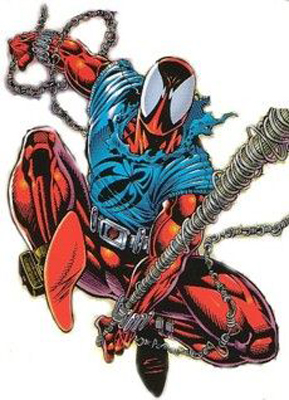

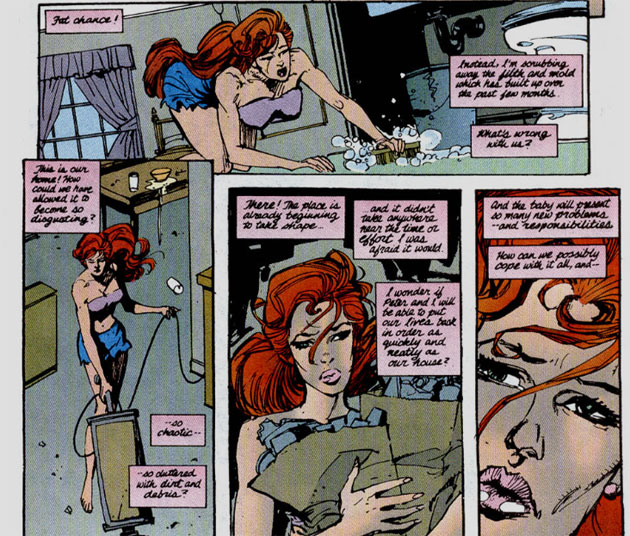
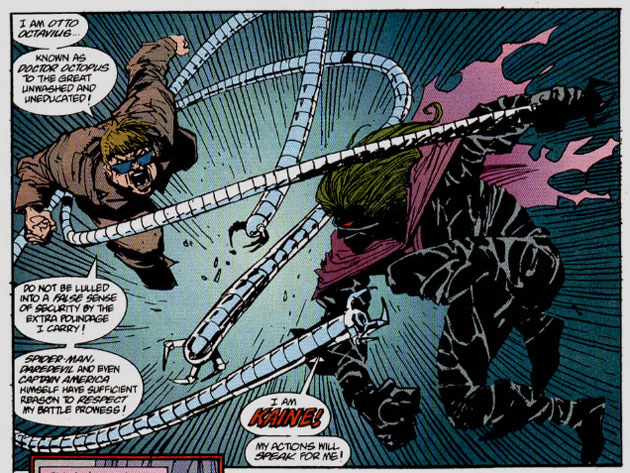


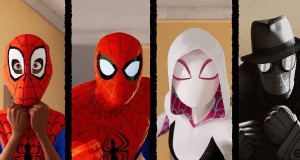

i’m with you dude, i tried to re-read this also and it was completely terrible so i gave up. we had a pretty high threshold for bullshit as kids huh?
Yah pretty much.
You need to get on Xbox Live more. I still have this unplayed copy of Magic: 2012 sitting on there.